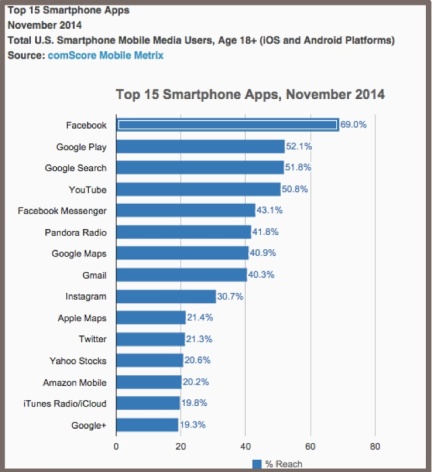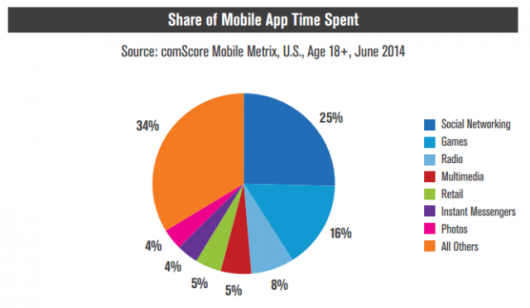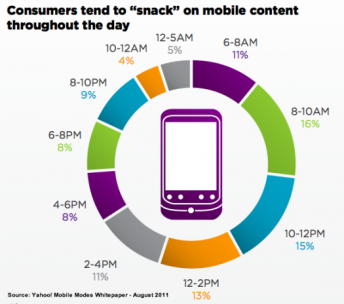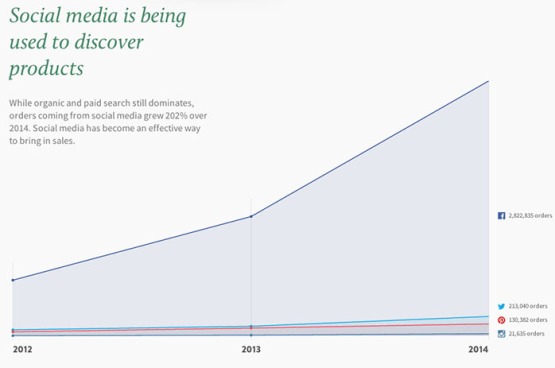In order to communicate with customers cross-channel and on the devices they use everyday, businesses must include mobile as part of their marketing strategy.
Mobile marketing is defined by Kaplan as ‘any marketing activity conducted through a ubiquitous network to which consumers are constantly connected using a personal mobile device’.
With social media being prominent in consumer’s daily lives as well as useful in e-commerce, it is important to understand mobile social media, which is defined as ‘a group of mobile marketing applications that allow the creation and exchange of user-generated content.’
Kaplan proposed the 4 i’s as advice for mobile social media.
- Integrate your activities into users’ lives, to avoid being a nuisance
- Individualize your activities to take account of user preferences and interests
- Involve the user through engaging conversations
- Initiate the creation of user generated content
First off let’s look at some recent trends of mobile usage…
A report on the decline of TV’s popularity, explains how consumers now split their attention across multiple screens when looking for entertainment or information. The trends highlighted show that globally, TV has lost 13% of its audience, and the greatest rate of abandonment comes from the 14-17 year old age group. This is not surprising as kids these days all seem to have multiple devices and from a shockingly young age.The report also shows that other devices (mobile phone, tablet and laptop/computer) have all increased in accessing digital video content, whilst TV has decreased across various types of digital content.
The image to the left displays the most popular Smartphone Apps as of the end of 2014, with Facebook coming in as number 1 (shocking… not).
Grandma: “You young people always have your noses buried in your phones…”
This is true, and most of the time it seems we’re not even doing anything useful on our phone. Sometimes we might reply to a text, read the news, stalk someone’s Instagram or make a frustrated post about the metro trains service.
But, what are we really doing on our phones all the time?
The image above from June 2014 highlights how we spend our time on our mobiles. Social networking, games and radio make up almost half of our time spent on our devices. Using our phone for actual ‘phone’ purposes, as well as researching or navigating comes under the 34% highlighted.
The 2011 diagram depicts how consumers actually ‘snack’ on mobile content. According to their findings, we do most of our snacking in the morning, catching up on information we’ve missed while we’re asleep and likely also distracting ourselves from work.
Not only do we actively use our phones now for all information and entertainment, we tend to scroll on our screens purely because we’re bored and waiting for something to take our interest. Companies can capitalise on this by effectively reaching out to consumers and giving them something to do.
People these days can still be hesitant to make an online purchase, especially off their mobile device. However, retail takes up 5% of time spent on our phones, which is likely thanks to social media links.
By following Kaplan’s 4 i’s to effectively communicate with customers, e-commerce businesses can improve their mobile based purchases and make consumers feel at ease when browsing and buying. One of the problems with online purchasing and especially from a mobile device, is visualization. It can be hard to know your size, detect the quality of a product or compare multiple products. So marketers must make consumers feel at ease by providing clear and appropriate images, easy links and simple purchase and delivery options, with guarantees of quality and ease of returns.
The Iconic, Australias leading online retailer, specifically targets mobile customers with their mobile app. This is made clear with their slogan “Shopping has never been easier”. The mobile design is simple and appealing, with useful links, it allows shoppers to browse and buy anytime, anywhere and not have to make a commitment to sitting down to online shop and go through the process of browsing through the complicated online store via mobile browser. The Iconic also has strong social media links, with Facebook advertisements and communications through companies such as UNiDAYS. This company well reflects the 4 i’s: integrate, individualize, involve and initiate, through its mobile marketing strategies that allow for broad reach, easy accessibility and user generated content.
Is mobile marketing the way of the future for e-commerce?
How do you prefer to shop? In-store, online (browser) or mobile app?
Please share your thoughts on these mobile trends that have been discussed.
When do you think you spend most of you time snacking? On what? And for what reason?





You’ve got me thinking. I’m an avid online shopper, most of the time it is spent while I am ‘snacking’ on my mobile. Many sites that I shop from will have that dropbar that says “Download Our App” and I click “No Thanks” every time.
I think it is because I look to choose when I want to choose to visit that particular site, rather than have them sitting there as an app on my homescreen forever (tad dramatic?).
Or maybe it’s because I feel as if sometimes mobile-friendly websites do not always have all the information that their desktop website would have. Which makes sense seeing as there is a lot of information that needs to fit onto your iPhone or Android screen. I find myself always clicking “Switch to desktop version”. Sometimes not everything needs to be so simplified. Less is more, but maybe more is more?
I don’t know what exactly it is. But I’m not yet convinced about ‘shopping apps’. And yet I’ve got the eBay app on both my phone and tablet.
Are you pro app?
LikeLike
If you are, I would love to hear your experience. Maybe I could be converted (and get over myself).
LikeLike
I totally agree with what you’re saying about online shopping habits, its very easy to pick up a phone and explore online, whilst downloading an app seems like more of a commitment!
I think what you have to consider is what brand you are looking at and their app quality. When it comes to big retailers such as The Iconic, Asos, Ebay etc they have great Apps and include many brands and I think it is definitely more practical to have the mobile app as the mobile websities are not always configured as well. The apps are simply more user friendly on the mobile, designed for the simple, quick shopping we do when we are snacking. Obviously an app for every brand we like would just clog up our mobile though. So whilst I am pro app, I would be selective with the apps I download; how often I browse/buy from them, what incentives they provide (10% off with app download etc.) and simply the quality of their app.
Whilst the apps for these larger companies are great, for instance I have recently downloaded ‘The Locker’ app whilst I was actually in store (Footlocker) and purchasing a new pair of Sneakers, to get my discount, I do tend to do most of my online shopping when I am at home on the laptop. This is simply just because as a student I am careful with my spending and have had problems with online shopping in the past (wrong size, poor quality etc.) and like to be able to analyse the larger photos and take my time reading product information, so most of my mobile shopping is more the browser aspect. In terms of compatability to my phone screen I definitely prefer the apps to my browser.
Let me know your thoughts and how your experiences go if you become pro app!
LikeLike